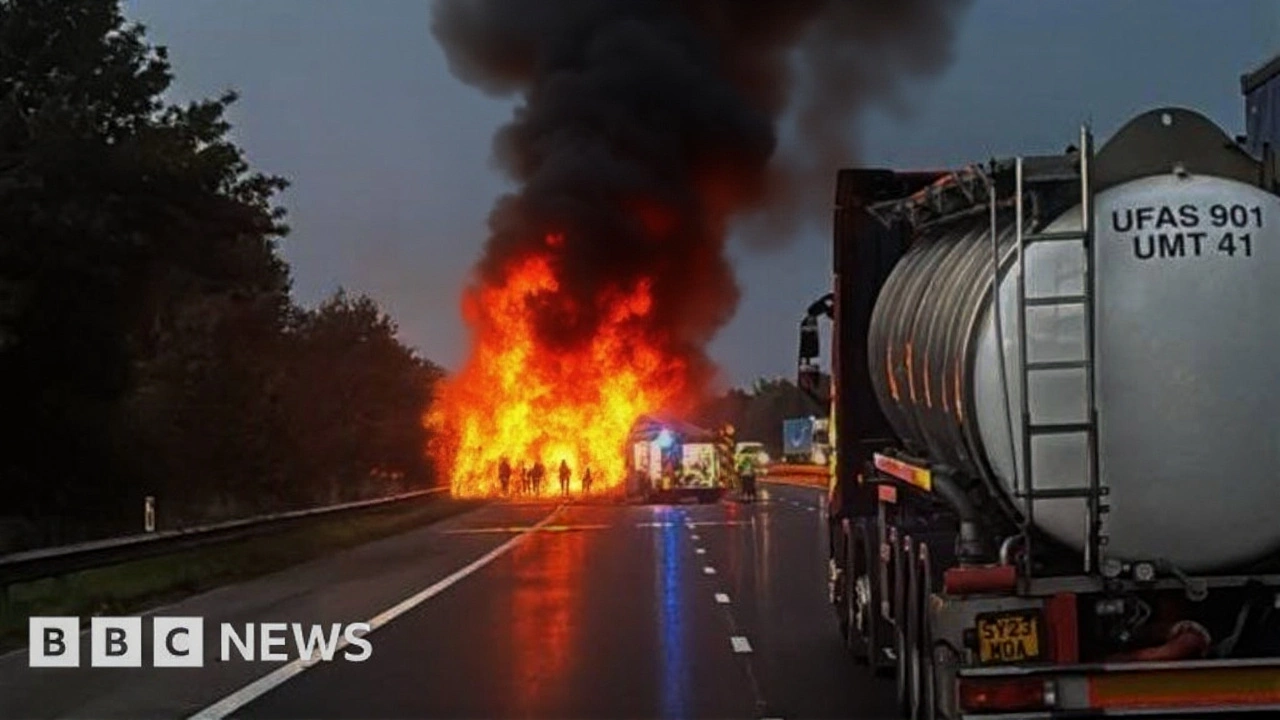Electric Vehicle Fire: Causes, Prevention, and Safety Insights
When dealing with electric vehicle fire, a blaze that starts in a battery‑powered car, usually involving the lithium‑ion pack and surrounding components. Also known as EV fire, it poses unique challenges for responders and owners alike. Understanding the electric vehicle fire risk helps you take smarter steps before a spark even appears.
One of the main culprits is the lithium‑ion battery, the high‑energy storage unit that powers most modern EVs. When cells overheat, short‑circuit, or suffer mechanical damage, they can enter a thermal runaway state that releases heat and gas fast enough to ignite nearby materials. The battery’s chemistry, cell layout, and cooling design all influence how quickly that runaway spreads.
To tame that heat, manufacturers are adding fire suppression systems, integrated sprinklers, foams, or gas‑based extinguishers built into the vehicle chassis. These systems aim to detect a temperature spike and dump an extinguishing agent before flames reach the passenger cabin. While not all models have them yet, the technology is becoming a selling point for safety‑conscious buyers.
Emergency responders also need a game plan. Emergency response protocols, training that teaches fire crews how to approach, cool, and safely remove an EV from a fire zone, differ from those for gasoline cars. Water can be effective, but too much may cause electrical hazards. Specialized cooling blankets and battery‑specific extinguishers are now part of many fire department kits.
Vehicle design plays a hidden role, too. Engineers are tweaking battery pack placement, using fire‑retardant materials, and adding thermal barriers to keep a hotspot contained. A well‑engineered chassis can direct heat away from occupants and make a fire easier to isolate. These design choices feed directly into insurance calculations, as insurers assess the likelihood of a claim based on how robust a model’s safety features are.
From a financial angle, insurance impact, the way insurers price policies and handle payouts after an EV fire, is gaining attention. Policies now often include clauses covering battery replacement, loss of drive range, and even roadside assistance for thermal events. Knowing how insurers view fire risk can guide owners toward better coverage and encourage manufacturers to prioritize safety.
All these pieces—battery chemistry, suppression tech, responder training, design tweaks, and insurance terms—interlock to shape the reality of an electric vehicle fire. Below you’ll find a range of articles that break down each factor, share real‑world incident analysis, and offer practical steps you can take whether you’re a driver, a mechanic, or just curious about the evolving safety landscape.

M5 shut after transporter fire engulfs nine electric cars in Devon
- Oct, 6 2025
- 0
A fire on a transport truck carrying nine electric cars forced the M5 near Exeter to shut, sparking traffic chaos and highlighting the unique dangers of lithium‑ion battery fires.
Categories
- Sports (5)
- World News (5)
- Entertainment (4)
- Sports and Recreation (3)
- Sports Commentary and Analysis (2)
- Sports Analysis (2)
- Sports History (1)
- Sports and Culture (1)
- Sports and Fitness (1)